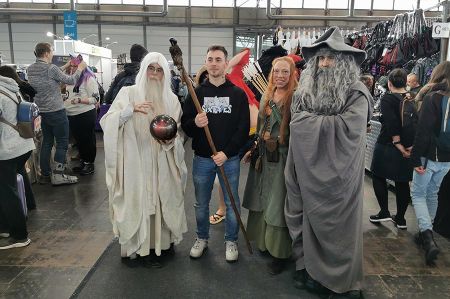Cosplay, manga, anime - at the Leipzig Book Fair
- Written by Portal Editor
Manga is actually just the Japanese term for comics. But since comics and anime have developed into a real economic factor in Japan, which has also spread more and more in Europe, it is time to take a closer look at this phenomenon.
We were also surprised at the extent to which manga, anime and the associated cosplay have now taken on. A community has developed that lives at least partly in a dream world.
Manga - a Japanese economic factor
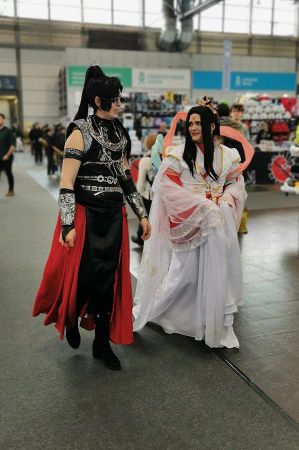 In Japan, manga now represents a significant part of literature and the media landscape. The manga market is the largest comic market in the world. The roots of Japanese comics, however, go back to the Middle Ages and further.
In Japan, manga now represents a significant part of literature and the media landscape. The manga market is the largest comic market in the world. The roots of Japanese comics, however, go back to the Middle Ages and further.
The oldest known precursors of Japanese comic art are drawings and caricatures from the early 8th century, which were discovered on the back of ceiling beams in 1935 during restoration work on the Hōryū Temple in Nara. Buddhist monks began drawing picture stories on paper rolls early on.
These are also called emakimono.
Origin of comic strips in Japan
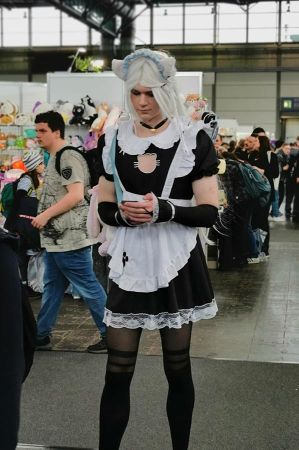 In the 13th century, people began to paint temple walls with drawings of animals and of the afterlife. At the turn of the 15th and 16th centuries, woodcuts appeared, which were bound in booklets and sold primarily to the wealthy middle class. Drawings from everyday life and even erotic images were also added. Since the time of the first religious drawings, art has often been characterized by absurd humor and even fecal humor. However, its current form is largely influenced by Western influences in the 19th and 20th centuries.
In the 13th century, people began to paint temple walls with drawings of animals and of the afterlife. At the turn of the 15th and 16th centuries, woodcuts appeared, which were bound in booklets and sold primarily to the wealthy middle class. Drawings from everyday life and even erotic images were also added. Since the time of the first religious drawings, art has often been characterized by absurd humor and even fecal humor. However, its current form is largely influenced by Western influences in the 19th and 20th centuries.
Outside of Japan, the term manga usually refers exclusively to comics that originate from Japan, but is now also used for non-Japanese works that are visually and narratively based on Japanese models. A clear distinction between manga and stylistic features is not possible in Japan due to the great formal and content-related diversity of the medium. The most important comic cultures influenced by manga include Korean manhwa and manhua from China. Many of the stylistic elements of manga that are considered typical can also be found in Japanese animated films, anime.
Paul Gravett - a journalist knows more
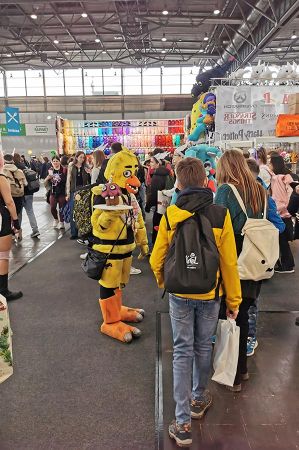 Since the 1990s, manga has been a successful cultural export from Japan alongside anime and computer games, and has also spread widely in Europe. Paul Gravett is a British journalist, author and curator who has worked in comic journalism since 1981. He has written for The Guardian, Blueprint, The Comics Journal, Comics International and Dazed & Confused, among others. He was the editor of the comic magazines Pssst! and Escape. He also curates exhibitions on comics and has written or edited several specialist books. The most important exhibitions include an exhibition on the history of English comics at the Festival International de la Bande Dessinée d'Angoulême and the annual comic exhibition at the Institute of Contemporary Arts. In 1992 he became chairman of the Cartoon Art Trust.
Since the 1990s, manga has been a successful cultural export from Japan alongside anime and computer games, and has also spread widely in Europe. Paul Gravett is a British journalist, author and curator who has worked in comic journalism since 1981. He has written for The Guardian, Blueprint, The Comics Journal, Comics International and Dazed & Confused, among others. He was the editor of the comic magazines Pssst! and Escape. He also curates exhibitions on comics and has written or edited several specialist books. The most important exhibitions include an exhibition on the history of English comics at the Festival International de la Bande Dessinée d'Angoulême and the annual comic exhibition at the Institute of Contemporary Arts. In 1992 he became chairman of the Cartoon Art Trust.
Paul Gravett observed several groups in the readership of manga: in addition to most readers who only read occasionally and only follow a few series, there is a much smaller group of fans of the medium and within this the particularly active group of otaku, as particularly obsessive fans are sometimes called. There is also a market of collectors of rare manga editions, but this is much smaller than the collectors' scene in the USA - also because most series are constantly being reprinted. Since the scene emerged in the 1980s, otaku have been branded as disturbed couch potatoes by society and the media and - partly in response to this - have consciously distanced themselves from society. For fans who collect a particularly large number of series and can no longer store all of the books, a service called jisui is increasingly being offered: a company scans the customer's books, which are then only kept as digital copies.
Fan scene is also expanding in Germany
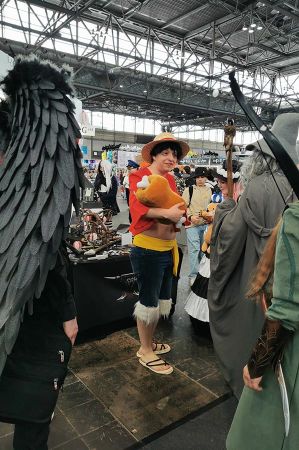 Since the 1970s, a strong fan scene has developed that has significant overlaps with that of anime. Fans are often creative themselves. Popular forms are fanart, fanfiction and dōjinshi, although publishers in Japan usually tolerate the fact that fans' self-published sequels or alternative stories violate copyrights. Fans also organize events: The Comic Market (also called 'Comiket'), which has taken place twice a year in Tokyo since 1975, is not only the largest dōjin fair in Japan, but with 35,000 exhibitors and over 500,000 visitors, it is the largest comic event in the world. The creative fan scene, in which adaptations of well-known works are created as well as original creations and aspiring artists publish their first works, is dominated by young women. This is also due to the fact that in Japanese society there is greater pressure on men to study quickly and start working, so they have fewer opportunities for time-consuming hobbies.
Since the 1970s, a strong fan scene has developed that has significant overlaps with that of anime. Fans are often creative themselves. Popular forms are fanart, fanfiction and dōjinshi, although publishers in Japan usually tolerate the fact that fans' self-published sequels or alternative stories violate copyrights. Fans also organize events: The Comic Market (also called 'Comiket'), which has taken place twice a year in Tokyo since 1975, is not only the largest dōjin fair in Japan, but with 35,000 exhibitors and over 500,000 visitors, it is the largest comic event in the world. The creative fan scene, in which adaptations of well-known works are created as well as original creations and aspiring artists publish their first works, is dominated by young women. This is also due to the fact that in Japanese society there is greater pressure on men to study quickly and start working, so they have fewer opportunities for time-consuming hobbies.
Cosplay - dressing up as a character from a manga series - is a popular hobby in the fan scene. This extends to cosplay cafes where the waiters are also costumed.
The MCC 2024 (Manga Comic Con) was part of the Leipzig Book Fair in March. So we were also able to plunge into the hustle and bustle of the magazines and characters of Japanese and European comic literature.
Cosplay, manga, anime: ten exciting facts about the Manga Comic Con in Leipzig
"We have facts worth knowing about the Manga Comic Con," says Emely Schmidt from MDR KULTUR
1. 35 percent of visitors come to the event in cosplay
The Manga Comic Con always takes place as part of the Leipzig Book Fair. Around a third of visitors to the Manga Comic Con appear in cosplay.
2. 451 exhibitors will be represented in 2024
At the very first Manga Comic Con in 2014, 169 exhibitors were represented, this year there are more than twice as many. At this year's fair, there will also be a new fashion area among the exhibitors with offers for clothing, jewelry and the like.
3. In 2019, there was a marriage proposal
During the award ceremony of the Leipzig Cosplay competition, a couple got engaged on the big stage. The "I do" was met with applause from the audience.
4. 19 guests of honor from Japan
Since 2014, 19 Japanese guests of honor have come to Leipzig. This year, three Japanese guests are coming to the fair. In general, the guests of honor come to the Manga Comic Con from all over the world. They present their latest comics and manga, give book signings, answer questions from their readers and do live drawings.
5. The exhibitors come from 21 countries
A colorful range of countries are represented at the Manga Comic Con. The exhibitors come from Hong Kong, Latvia and Canada, for example. The vendors from Malaysia have traveled the furthest.
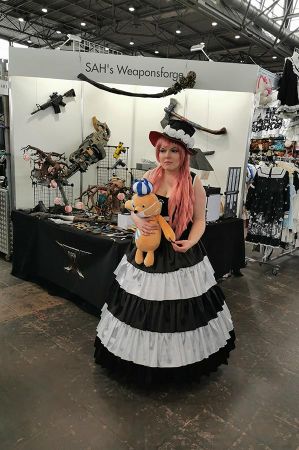 6. The Manga Comic Con has already hosted famous people
6. The Manga Comic Con has already hosted famous people
Among others, the manga artist Yusei Matsui was a visitor. One of his best known works is the manga series "Assassination Classroom".
A person in cosplay for the manga series "Assassination Classroom" in the halls of the Leipzig Book Fair. Image rights: picture alliance / Jens Kalaene/dpa | Jens Kalaene
The American author of the "Eragon series", Christopher Paolini, was also a guest at the Manga Comic Con in Leipzig.
The author Christopher Paolini wrote the book series "Eragon". Image rights: IMAGO TT Fredrik Sandberg
The voice actors René Dawn-Claude, Max Felder and Marios Gavrilis from the manga series "Attack on Titan" paid a visit to the Leipzig Trade Fair in 2023.
From left to right: René Dawn-Claude, Max Felder and Marios Gavrilis at a panel discussion on the anime series "Attack on Titan" Image rights: IMAGO / Future Image M.Wehnert
7. The average age of the visitors is 27 years
This was the result of the evaluation of the visitors from last year. The largest age group is the 21 to 30 year olds, who make up just over 50 percent of the fair visitors.
8. 395 applicants applied for 80 places in the New Artist Alley
The coveted artist places for the New Artists Alley are allocated by lottery. In the New Artist Alley, artists present their ideas for manga, comics and more. The project is aimed at non-commercial artists and artisans who only offer handmade products. Exhibiting here gives them the opportunity to show their work to a wider audience and to make contacts.
9. There is a plagiarism team
The plagiarism team is on the move at the Manga Comic Con and keeps an eye on exhibitors to ensure that they do not sell counterfeits. Exhibitors who offer plagiarisms first receive a verbal request to remove them. This can then be followed by a written warning up to a contractual penalty including a fine. In 2023, ten written warnings and three contractual penalties were issued.
10. The MCC's floor space has been enlarged
Since last year, the Manga Comic Con has been held in one and a half of the four exhibition halls. In 2024, the MCC will be in Hall 1 and partly in Hall 3.
More about the Manga Comic Con and the Leipzig Book Fair next year.
Please read as well:
